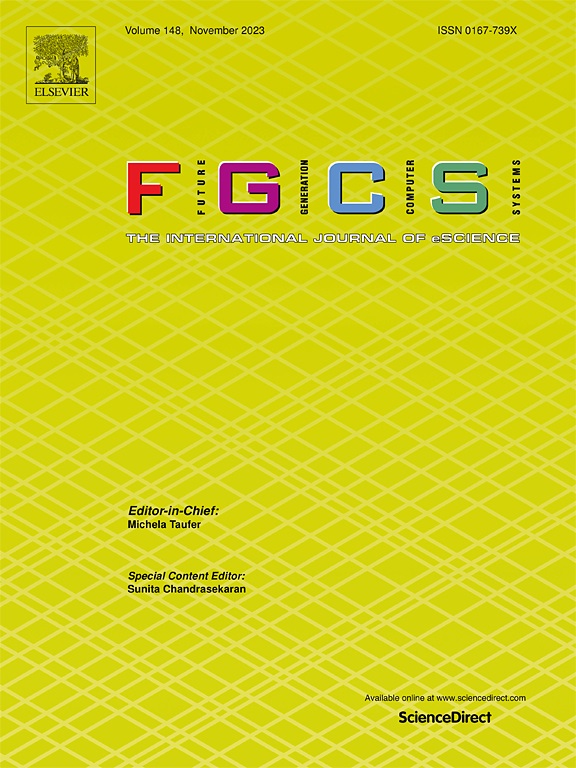Review of deep learning-based pathological image classification: From task-specific models to foundation models
IF 6.2
2区 计算机科学
Q1 COMPUTER SCIENCE, THEORY & METHODS
Future Generation Computer Systems-The International Journal of Escience
Pub Date : 2024-10-28
DOI:10.1016/j.future.2024.107578
引用次数: 0
Abstract
Pathological diagnosis is considered the gold standard in cancer diagnosis, playing a crucial role in guiding treatment decisions and prognosis assessment for patients. However, achieving accurate diagnosis of pathology images poses several challenges, including the scarcity of pathologists and the inherent subjective variability in their interpretations. The advancements in whole-slide imaging technology and deep learning methods provide new opportunities for digital pathology, especially in low-resource settings, by enabling effective pathological image classification. In this article, we begin by introducing the datasets, which include both unimodal and multimodal types, as essential resources for advancing pathological image classification. We then provide a comprehensive overview of deep learning-based pathological image classification models, covering task-specific models such as supervised, unsupervised, weakly supervised, and semi-supervised learning methods, as well as unimodal and multimodal foundation models. Next, we review tumor-related indicators that can be predicted from pathological images, focusing on two main categories: indicators that can be recognized by pathologists, such as tumor classification, grading, and region recognition; and those that cannot be recognized by pathologists, including molecular subtype prediction, tumor origin prediction, biomarker prediction, and survival prediction. Finally, we summarize the key challenges in digital pathology and propose potential future directions.
基于深度学习的病理图像分类回顾:从特定任务模型到基础模型
病理诊断被认为是癌症诊断的黄金标准,在指导治疗决策和评估患者预后方面起着至关重要的作用。然而,实现病理图像的准确诊断面临着一些挑战,其中包括病理学家的稀缺性以及他们在解释时固有的主观差异性。全切片成像技术和深度学习方法的进步通过实现有效的病理图像分类,为数字病理学提供了新的机遇,尤其是在资源匮乏的环境中。在本文中,我们首先介绍了数据集,其中包括单模态和多模态类型,它们是推进病理图像分类的重要资源。然后,我们全面概述了基于深度学习的病理图像分类模型,涵盖了特定任务模型,如监督、无监督、弱监督和半监督学习方法,以及单模态和多模态基础模型。接下来,我们回顾了可从病理图像预测的肿瘤相关指标,重点关注两大类:病理学家可识别的指标,如肿瘤分类、分级和区域识别;病理学家无法识别的指标,包括分子亚型预测、肿瘤起源预测、生物标记物预测和生存预测。最后,我们总结了数字病理学面临的主要挑战,并提出了潜在的未来发展方向。
本文章由计算机程序翻译,如有差异,请以英文原文为准。
求助全文
约1分钟内获得全文
求助全文
来源期刊
CiteScore
19.90
自引率
2.70%
发文量
376
审稿时长
10.6 months
期刊介绍:
Computing infrastructures and systems are constantly evolving, resulting in increasingly complex and collaborative scientific applications. To cope with these advancements, there is a growing need for collaborative tools that can effectively map, control, and execute these applications.
Furthermore, with the explosion of Big Data, there is a requirement for innovative methods and infrastructures to collect, analyze, and derive meaningful insights from the vast amount of data generated. This necessitates the integration of computational and storage capabilities, databases, sensors, and human collaboration.
Future Generation Computer Systems aims to pioneer advancements in distributed systems, collaborative environments, high-performance computing, and Big Data analytics. It strives to stay at the forefront of developments in grids, clouds, and the Internet of Things (IoT) to effectively address the challenges posed by these wide-area, fully distributed sensing and computing systems.

 求助内容:
求助内容: 应助结果提醒方式:
应助结果提醒方式:


